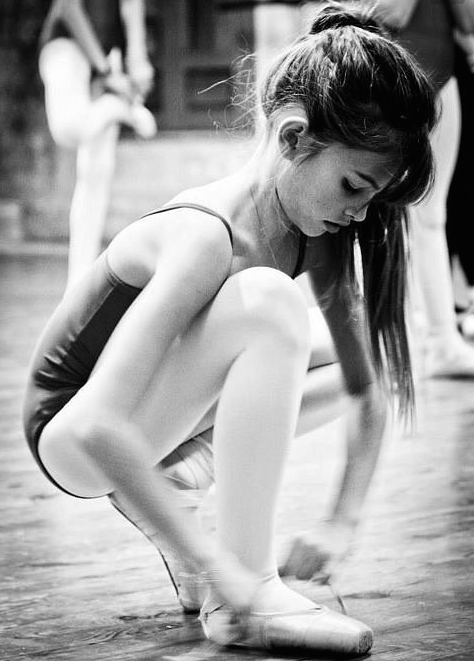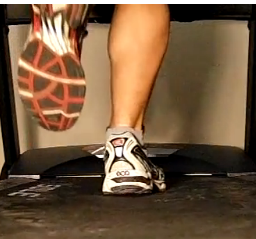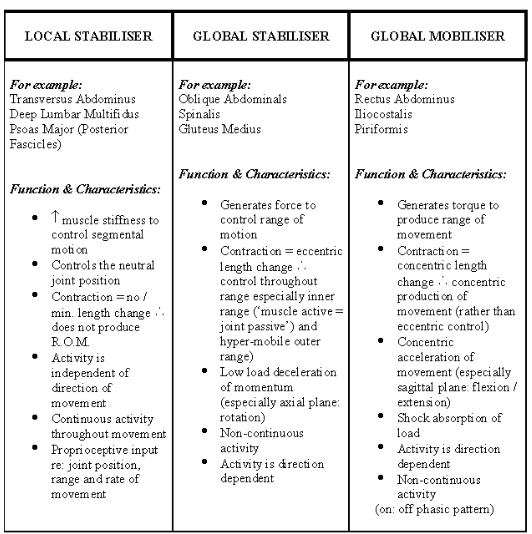
Local Reflexive Stabilization & Movement Efficiency
 Whether we consciously realize it or not we all want to move better, feel stronger and stay pain-free. We all seek the ability to do the activities we love – whether that be going for a long walk with a loved one or competing in an obstacle race.
Whether we consciously realize it or not we all want to move better, feel stronger and stay pain-free. We all seek the ability to do the activities we love – whether that be going for a long walk with a loved one or competing in an obstacle race.
It is my mission to help professionals and patients alike achieve what I call movement longevity by better understanding the concepts of movement efficiency and local reflexive stabilization.
What does it mean to be efficient?
To be efficient means to effectively use energy. When we think about bipedal locomotion the energy that we need to get from Point A to Point B is found from the ground we walk on.
Bipedal locomotion or walking is considered a series of falls with each foot contact (foot fall) providing the energy needed to take the successive step. As our foot contacts the ground we are encountering 1 – 1.5x our body weight in impact forces. These impact forces are converted from potential energy to elastic energy, providing a recoil effect to bring the swing leg forward.
 When we look at the force peak curve of a walking gait cycle what’s quite fascinating and perhaps under appreciated is that even though our body brings in 1 – 1.5x our body weight in energy (heel contact) we actually release 2 – 2.5x our body weight when we push off (forefoot propulsion)!
When we look at the force peak curve of a walking gait cycle what’s quite fascinating and perhaps under appreciated is that even though our body brings in 1 – 1.5x our body weight in energy (heel contact) we actually release 2 – 2.5x our body weight when we push off (forefoot propulsion)!
What this means is that our body is somehow is able to double the energy that it is provided with! How is this possible? And why is this even important?
Understanding Fascial Elasticity
The concept I described above is referred to as the catapult effect and truly is the meaning of movement efficiency. To move efficiently does not meant to just take in energy and release it with little loss of energy. It actually means to take in energy and double it!
This ability to double potential energy allows a basketball player to slam-dunk a ball or a triple jump jump 50+ feet. This catapult effect lies within our connective tissue – namely our myofascia.
To effectively understand the catapult effect and the oading response during bipedal locomotion one must first understand what’s referred to as the Muscle Tuning Theory . This theory was researched and developed by Dr Benno Nigg out of the University of Calgary Canada.
What the Muscle Tuning Theory demonstrates is that in order to effectively damp the impact forces encountered during initial contact we must have sufficient foot and ankle stiffness. We must contact the ground with enough foot and ankle isometric contractions to allow the rapid loading of impact forces (potential energy) into our connective tissue.
Because our foot and ankle muscles are firing isometrically during the loading response what actually allows the joint movements of deceleration (ankle dorsiflexion, STJ eversion, tibial internal rotation) is the elasticity of our connective tissue (fascia / tendons).

This fascial loading is dependent on the degree of elasticity or rubber band effect in our connective tissue. However simply having fascial elasticity is not enough. In order to effectively load our fascia with potential energy we must first achieve sufficient fascial tension.
Fascial Tension = Stability
If I were to say that to have fascial elasticity we must first have fascial tension – this may seem contradictory. How can our fascia be both elastic and stiff at the same time!
What if I were to word it another way. In order to effectively load impact forces (potential energy) we must be STABLE! Let me take it even further with this statement – Stability is the foundation through which power, force and resistance is generated.
In other words to move efficiently and transfer energy we must have sufficient stability. In the words of Dr Perry Nickelston I think that deserves a BOOM!
This above statement is what I try to achieve in all of my patients. To help my patients become pain-free I know I must teach them to achieve proper stability. But not only do we need proper stability – we need deep joint stability. And not only do we need deep joint stability – we need fast deep joint stability.
This is what I refer to as Local Reflexive Stabilization. Local – referring to our local stabilizing muscles and reflexive meaning fast or subconscious.
Understanding Local Reflexive Stabilization
The concept of local vs. global stabilizers was first introduced by Dr Vladamir Janda and then later expanded upon by Shirley Sahrmann.
 The following image demonstrates some of the biggest differences between local and global stabilizers. What’s fascinating is that when we consider the Deep Front Fascial Line we can see it is formed by all the local stabilizers. The foundational concept in EBFA’s Barefoot Training Specialist Certification is to train stiffness and reflexive sequencing between the foot and core.
The following image demonstrates some of the biggest differences between local and global stabilizers. What’s fascinating is that when we consider the Deep Front Fascial Line we can see it is formed by all the local stabilizers. The foundational concept in EBFA’s Barefoot Training Specialist Certification is to train stiffness and reflexive sequencing between the foot and core.
By intelligently tapping into our local stabilization system we will find ourselves with enhanced stability – and therefore better be able to load impact forces during dynamic movements.
Because it is so easy to slide out of local stabilization and into global stabilization the below 3 exercises should be used as a daily reset or activation for the local reflexive stabilization needed for bipedal locomotion.
3 Way to Enhance Local Reflexive Stabilization
Step 1 – Diaphragmatic Breathing
Step 2 – End Range Expiration (with pelvic floor activation if possible)
Step 3 – Diaphragmatic Breathing / End Range Expiration & Short Foot
To learn more about EBFA’s education and our Barefoot Training Specialist Certification please visit www.ebfafitness.com
As always – stay #barefootstrong!
Dr Emily
